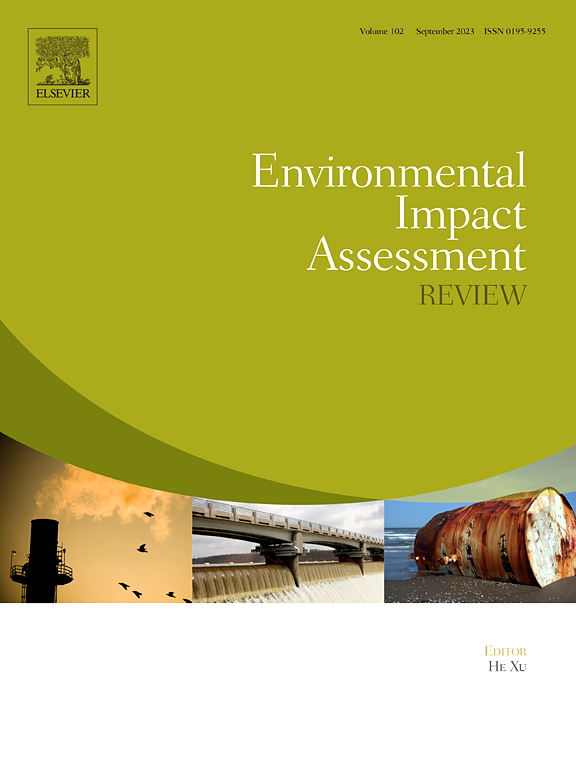Understanding lead exposure through data and domain expertise: Insights from New Jersey with a geographically weighted regression analysis
IF 9.8
1区 社会学
Q1 ENVIRONMENTAL STUDIES
引用次数: 0
Abstract
Lead contamination remains a persistent and dangerous threat, particularly affecting young children and vulnerable communities. This study aims to develop a comprehensive lead exposure risk map for New Jersey municipalities by integrating diverse lead contamination data and analyzing the spatial distribution and magnitude of lead exposure risks. Utilizing both data-driven and participatory approaches, we employed Principal Component Analysis (PCA) and Analytical Hierarchy Process (AHP) to create distinct multi-criteria lead exposure indices. Then, a Geographically Weighted Regression (GWR) analysis was conducted to explore the local variations in lead exposure and the factors influencing these risks using both indices. Our linear models indicate that both PCA and AHP-based indices effectively capture the essence of lead exposure in urban areas, with significant correlations (Adjusted R2 = 0.225 for PCA and 0.466 for AHP, p < 0.01) observed between the indices and socioeconomic factors, with poverty, percentage of people of color, and housing tenure consistently identified as critical local predictors. The GWR analysis revealed not only the local variability of these factors' influence on lead exposure, but also that incorporating stakeholder knowledge and expert input provides valuable insights that pure data-driven methods may overlook. The study revealed significant spatial variations in lead exposure across New Jersey, identifying localized risk hotspots in urban areas such as Newark. Socioeconomic disparities, particularly poverty levels, percentage of people of color, and rental housing rates, though having spatially varying influences on lead exposure, were found to have significantly influence nonetheless, highlighting important environmental justice concerns. Furthermore, combining expert-driven (AHP) and data-driven (PCA) indices provided complementary insights, emphasizing the value of integrating stakeholder expertise with empirical data for targeted public health interventions.

通过数据和领域专业知识了解铅暴露:来自新泽西州的见解与地理加权回归分析
铅污染仍然是一个持续存在的危险威胁,尤其影响到幼儿和弱势社区。本研究旨在通过整合不同的铅污染数据,分析铅暴露风险的空间分布和程度,为新泽西州市政当局开发一个全面的铅暴露风险地图。利用数据驱动和参与式方法,我们采用主成分分析(PCA)和层次分析法(AHP)来创建不同的多标准铅暴露指数。然后,利用地理加权回归(GWR)分析两地铅暴露风险的地区差异及其影响因素。我们的线性模型表明,基于PCA和AHP的指数都有效地捕捉了城市铅暴露的本质,两者之间存在显著相关性(调整后的R2 = 0.225, AHP = 0.466, p <;0.01),在指数和社会经济因素之间观察到,贫困、有色人种比例和住房使用权一直被认为是关键的地方预测因素。GWR分析不仅揭示了这些因素对铅暴露影响的局部差异,而且还揭示了将利益相关者知识和专家意见结合起来提供了纯数据驱动方法可能忽略的有价值的见解。该研究揭示了新泽西州铅暴露的显著空间差异,确定了纽瓦克等城市地区的局部风险热点。社会经济差异,特别是贫困水平、有色人种百分比和租房率,虽然在空间上对铅暴露有不同的影响,但仍有显著影响,突出了重要的环境正义问题。此外,专家驱动(AHP)和数据驱动(PCA)指数相结合提供了互补的见解,强调了将利益相关者的专业知识与有针对性的公共卫生干预的经验数据相结合的价值。
本文章由计算机程序翻译,如有差异,请以英文原文为准。
求助全文
约1分钟内获得全文
求助全文
来源期刊

Environmental Impact Assessment Review
ENVIRONMENTAL STUDIES-
CiteScore
12.60
自引率
10.10%
发文量
200
审稿时长
33 days
期刊介绍:
Environmental Impact Assessment Review is an interdisciplinary journal that serves a global audience of practitioners, policymakers, and academics involved in assessing the environmental impact of policies, projects, processes, and products. The journal focuses on innovative theory and practice in environmental impact assessment (EIA). Papers are expected to present innovative ideas, be topical, and coherent. The journal emphasizes concepts, methods, techniques, approaches, and systems related to EIA theory and practice.
 求助内容:
求助内容: 应助结果提醒方式:
应助结果提醒方式:


